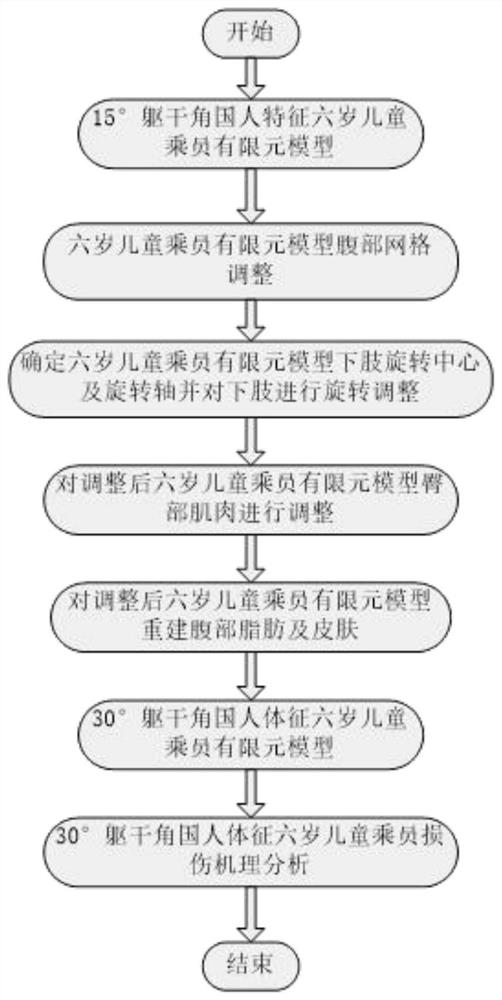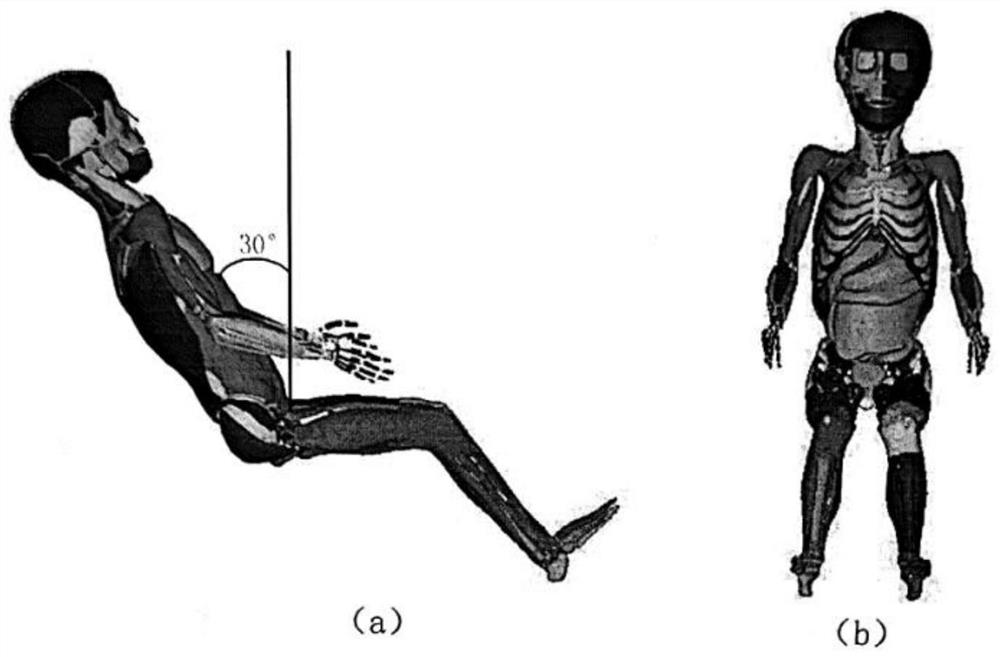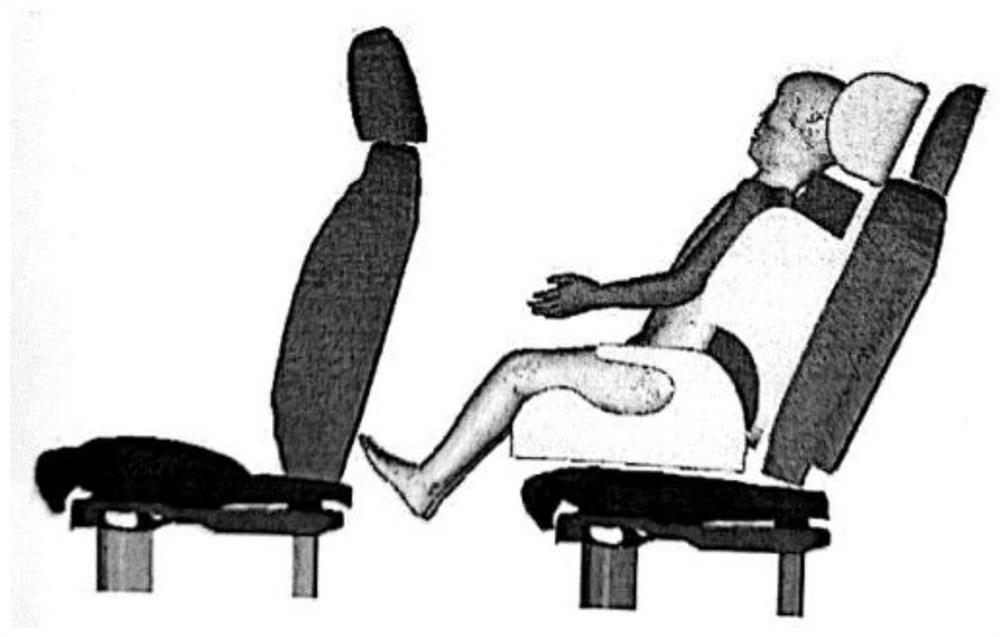Finite element model of 30-degree trunk angle national sign six-year-old child passenger and construction method and application thereof
A construction method and finite element technology, applied in the field of computer numerical simulation and human injury biomechanics research, can solve the problems of single and non-adjustable sitting angle, and achieve the effect of high degree of biological simulation
- Summary
- Abstract
- Description
- Claims
- Application Information
AI Technical Summary
Problems solved by technology
Method used
Image
Examples
Embodiment
[0064] Study on Head Injury of Six-year-old Chinese Occupant with 30° Torso Angle Based on 50% Overlap MPDB Crash Test
[0065] (1) Simulation model establishment
[0066] The child safety seat is connected to the rear seat of the car through the tide command in the Pam-crash software, and the 30° torso angle is a Chinese sign. The six-year-old child occupant is restrained in the child seat by the adult seat belt, and the seat belt passes through the rear seat The tide command was fixed. The child safety seat establishes surface-to-surface contact with the rear seat of the car, the contact thickness is 0.1mm, the coefficient of static friction is 0.15, and the coefficient of dynamic friction is 0.2; the torso angle of 30° is the Chinese human sign. The seat establishes surface-to-surface contact, the contact thickness is 0.01mm, the static friction coefficient is 0.15, and the dynamic friction coefficient is 0.2. Load the initial velocity, linear deceleration curve and rotat...
PUM
 Login to View More
Login to View More Abstract
Description
Claims
Application Information
 Login to View More
Login to View More - R&D
- Intellectual Property
- Life Sciences
- Materials
- Tech Scout
- Unparalleled Data Quality
- Higher Quality Content
- 60% Fewer Hallucinations
Browse by: Latest US Patents, China's latest patents, Technical Efficacy Thesaurus, Application Domain, Technology Topic, Popular Technical Reports.
© 2025 PatSnap. All rights reserved.Legal|Privacy policy|Modern Slavery Act Transparency Statement|Sitemap|About US| Contact US: help@patsnap.com



